World 🢖 South America 🢖 Chile
Caves 🢔 Geological wonders 🢔 Categories of wonders
Wonder
The Marble Caves (Cavernas de Mármol)
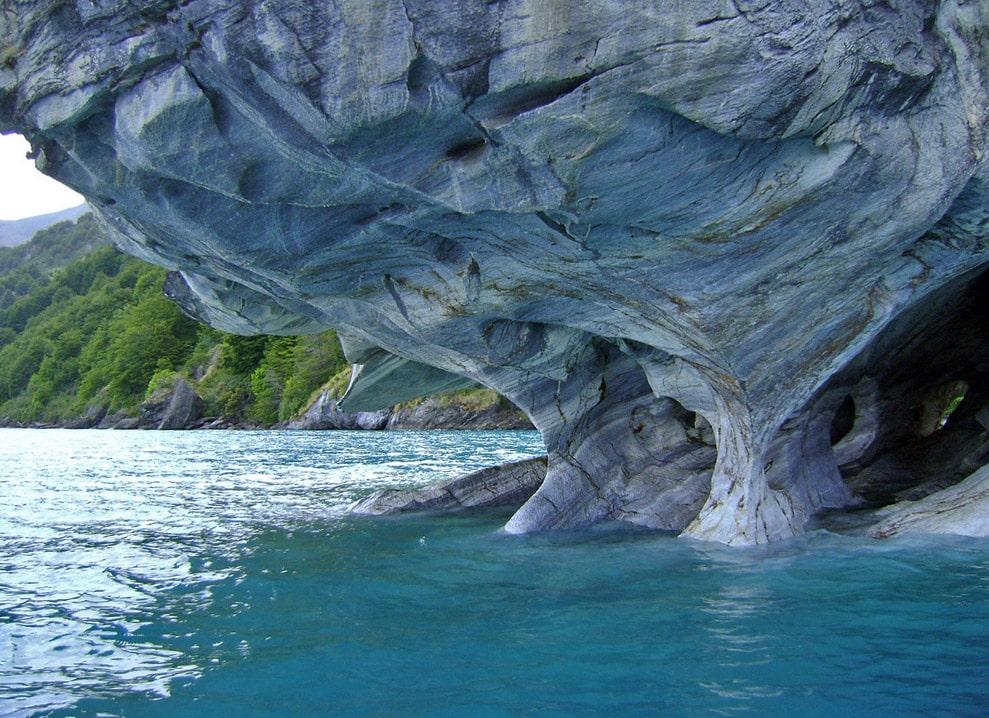
 In short
In short
The Marble Caves is geological formation of unusual beauty. These caves have formed in a pure marble and are bathed in the deep blue water of General Carrera Lake.
 47.0%
47.0%
GPS coordinates
Location, address
Name in Spanish
Length
Map of the site
If you see this after your page is loaded completely, leafletJS files are missing.
 In detail
In detail
Blue water
The enormous General Carrera Lake is fed by rivers coming from several glaciers of Patagonian Andes.
The ice of glaciers contains small particles and, when the ice melts, many particles remain suspended in the water. This gives an unusual effect – the glacial meltwater is slightly turbid and it refracts the blue part of sunlight. Due to this the water of General Carrera Lake has a distinct blue color.
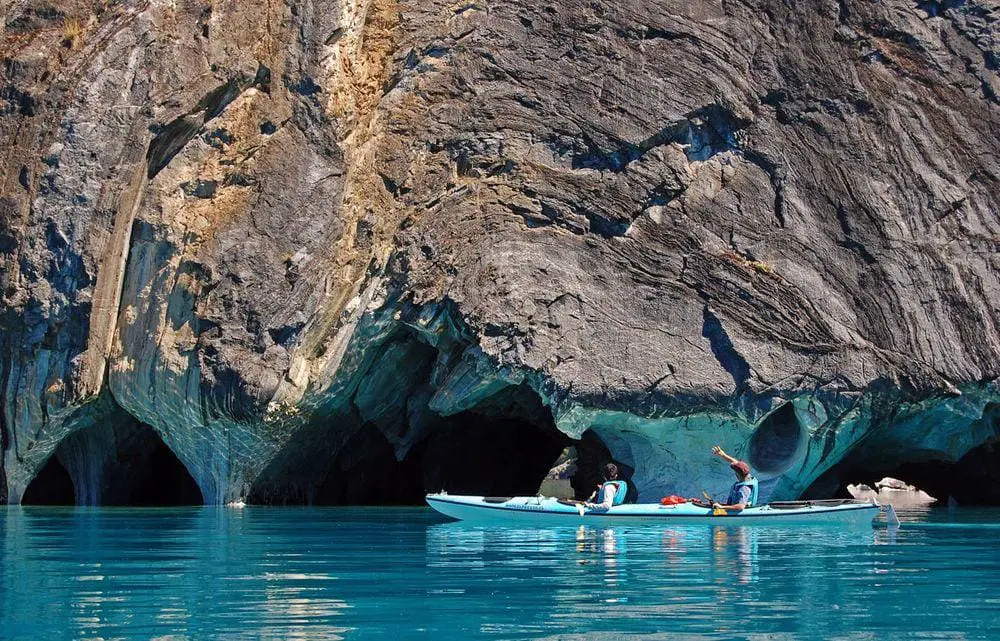
Marble monoliths
Near the small town of Puerto Tranquilo cliffs of pure marble are rising from the lake water. Marble is exposed in the peninsula some 5 km south-east from Puerto Tranquilo and in a group of islands (consisting of pure marble!) several kilometers north-east from the peninsula.
It has been calculated that the whole block of marble weighs 5 billion tons. The stone is in light grey color, with frequent darker striation.
This layer of marble was exposed by the movements of glaciers during the Pleistocene epoch.
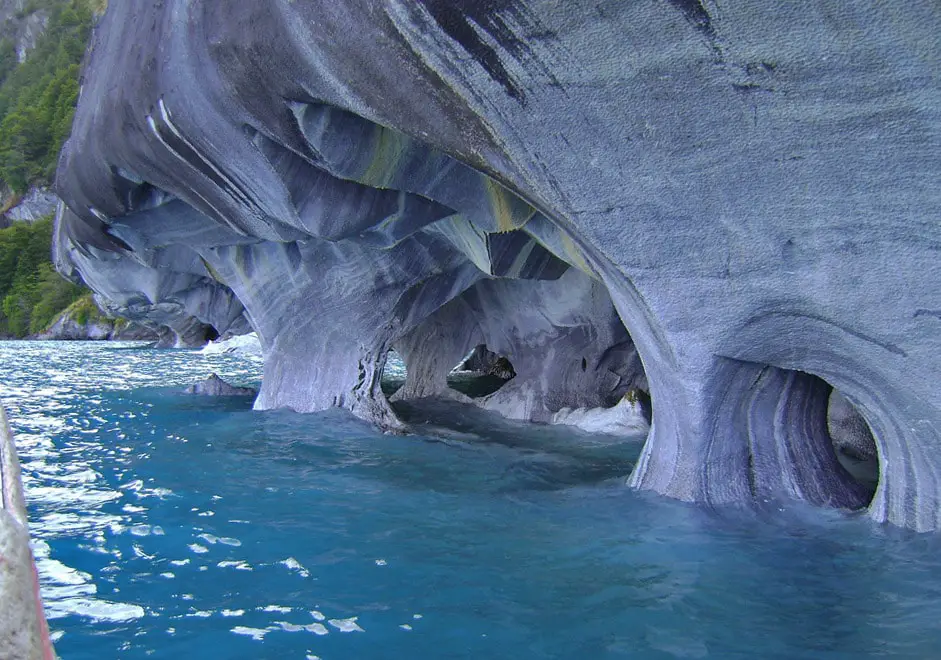
The geological history of Lake General Carrera is complex – the lake has changed its outlet and multiple times has changed its level. Lake reached its present level some 6,200 years ago. (1)
Caves, caverns, tunnels
Marble is slightly soluble in water. Thus, when the lake reached its present level, the process of the solution started at this level. The marble dissolved faster at the water surface – small seeps through the cracks in the marble made these fractures wider and waves washed away the dissolved material.
Thus, in a few thousand years’ time (a very short time for geological processes) the interaction of the marble and blue water of the lake formed a place of bewildering beauty – countless caves, mazes, columns, and tunnels in the marble.
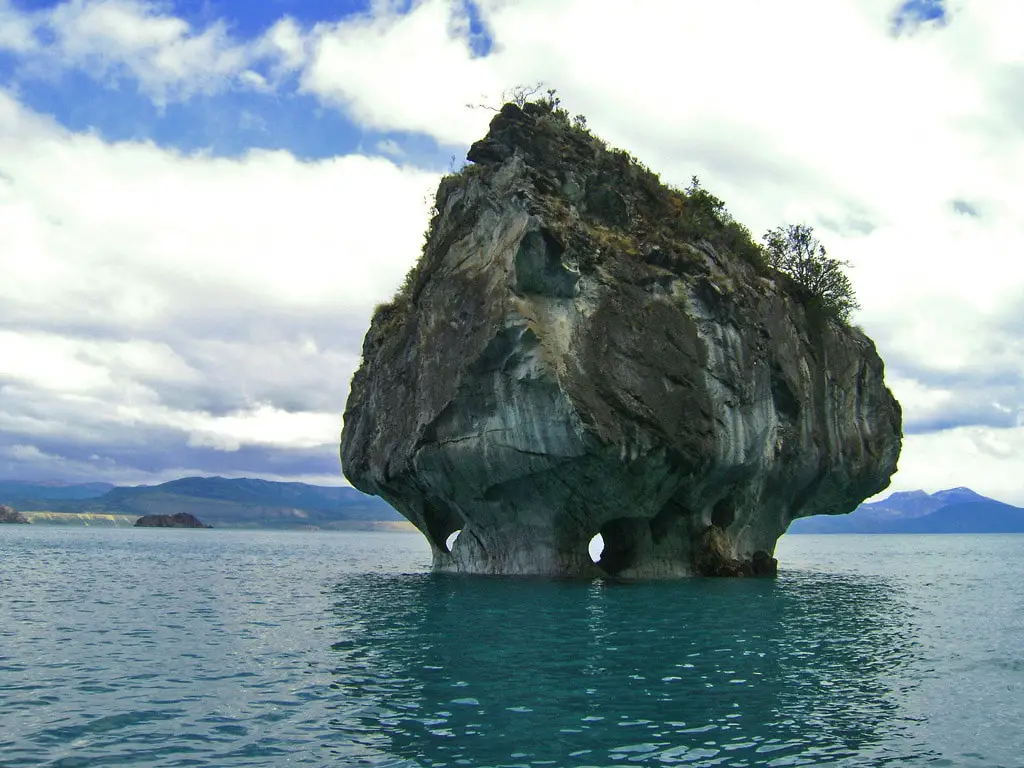
Larger, more imposing structures are Marble Cathedral and Marble Chapel. Marble Cathedral (Catedral de Mármol) is a small island on the peninsula but Marble Chapel (Capilla de Mármol) is a small marble island closer to the northern coast. One can stop his boat at one such island and take a walk… under the island, through the mazes and tunnels.
Tourists
Marble Caves are little known internationally but those tourists, who come here, are very impressed. Tourists can rent boats in Puerto Tranquilo and take a guided tour to the marble peninsulas and islands. In some places, boats go under the ground, through marble tunnels. Naturally, in bad weather boats can not drive near the caves.
Throughout the year the lights and colors in the caves change. In early spring the water is low and the caves have a more natural-looking color. But in summer, when the level in the lake rises, the caves are partly inundated and get their eerie blue color. This area has a lot of Sun – bad weather stays on the other side of the Andes.
Hydroelectric plants
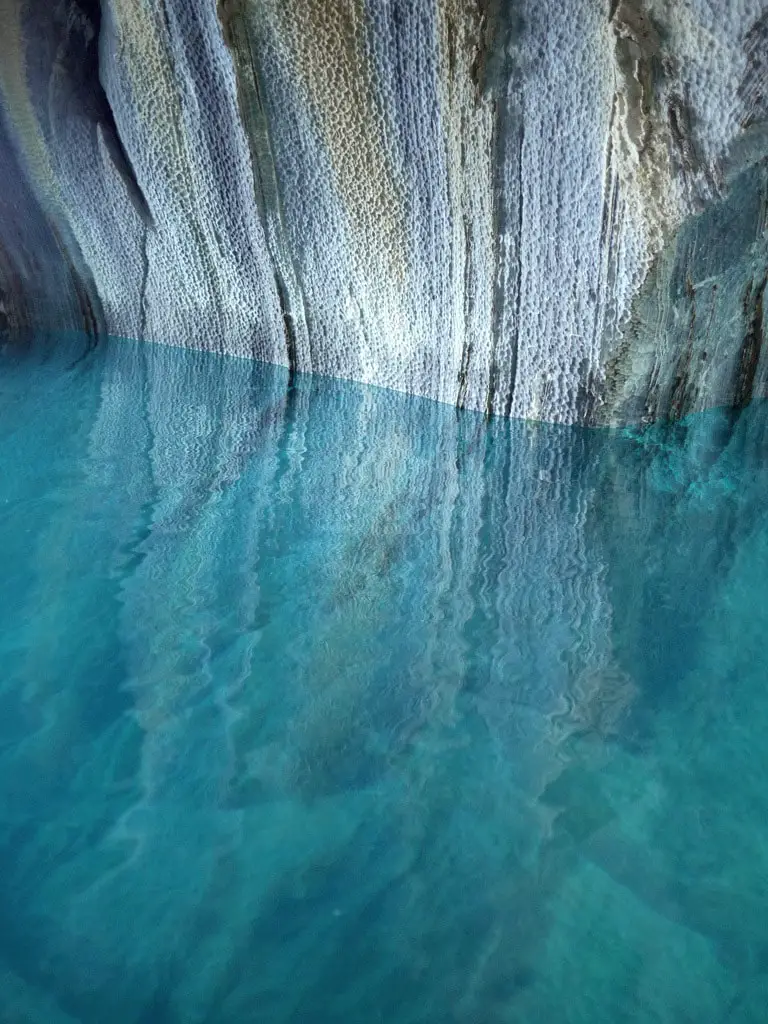
Developers of hydroelectric plants noticed the might of Patagonian glacial rivers long ago. Here and there and finally… everywhere are planned new hydroelectric plants which may deprive this region of its natural beauty permanently.
The area around General Carrera Lake is endangered by one such project, which is planned by the company “Hydroaisen”. This project plans the development of new dams on the Baker and Pascua rivers. The transfer of the energy to the cities would require the construction of new high-tension power lines and one such line is planned exactly next to Marble Caves.
Thus – appreciate the beauty of Marble Caves now… and assist the movement against these dams. There should be better ways to obtain the energy.
References
- C. Mike Bell, Quaternary lacustrine braid deltas on Lake General Carrera in southern Chile, Andean Geology 36 (1): 51-65. January, 2009. Accessed in 10.01.2012.
 Linked articles
Linked articles
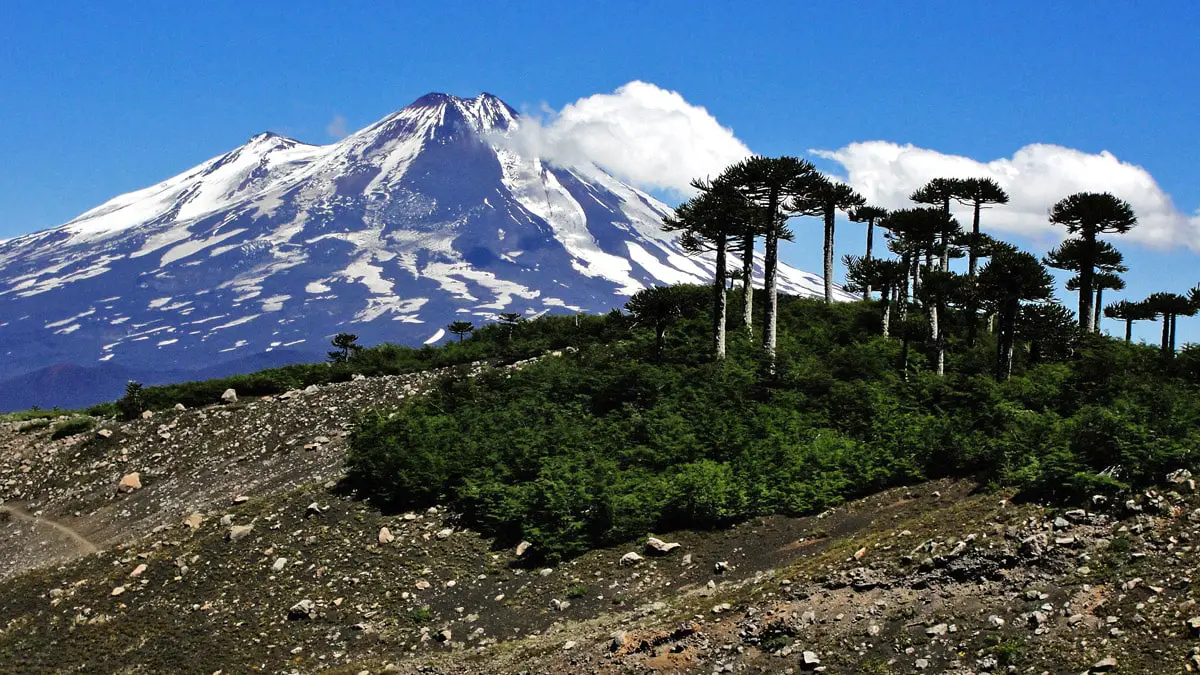
Wonders of Chile
The natural and man-made heritage of Chile is very diverse, also thanks due to the extreme length of the country extending from the driest deserts in the north to the most southern historical inhabited lands of the world in Patagonia. Highlights of Chile are magnificent views of Patagonian Andes and fjords, the volcanic landscape of Northern and Central Chile, and the driest desert of the world – the Atacama.
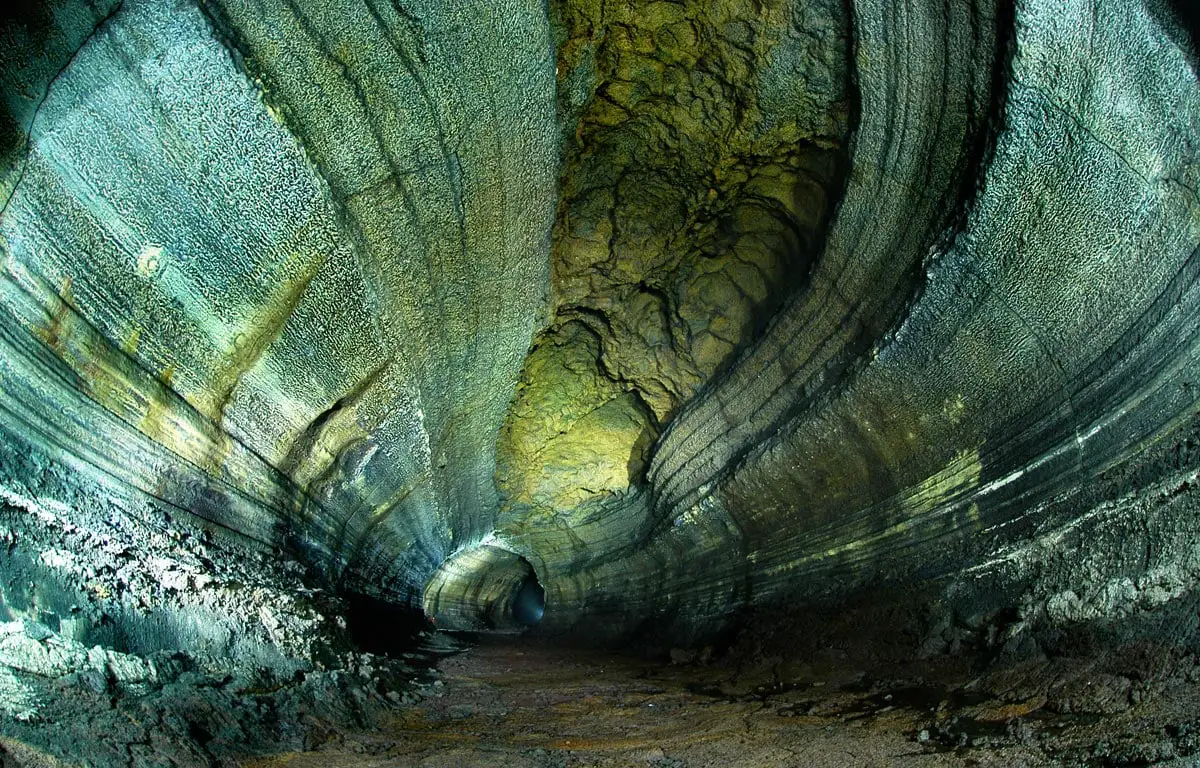
Caves
Every year there are reported exciting discoveries of new caves and discoveries of new qualities such as cave paintings in the ones known before. But there still is a feeling that our knowledge covers just a small part of all these monuments of nature.
Though, those which are known to us, offer a surprising diversity of unusual features and impressive sights.
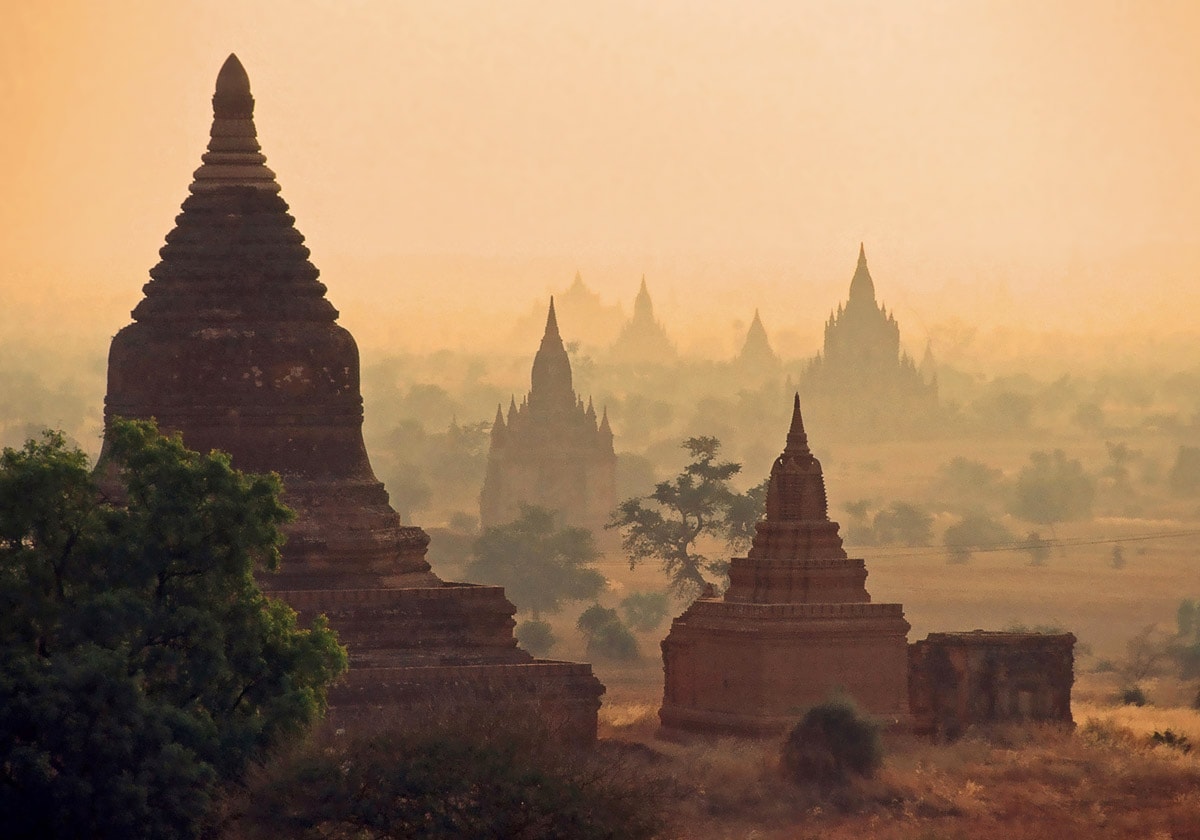
Wonders of Asia
Any other continent (and part of the world) seems small if compared to Asia. This refers also to natural and man-made heritage: in Asia are not just thousands of great landmarks, there are found landmarks created by thousands of diverse cultures from ancient Phoenicians to the mysterious small people in the Philippines and eastern islands of Indonesia.
 Recommended books
Recommended books
Enduring Patagonia
Patagonia is a strange and terrifying place, a vast tract of land shared by Argentina and Chile where the violent weather spawned over the southern Pacific charges through the Andes with gale-force winds, roaring clouds, and stinging snow. Squarely athwart the latitudes known to sailors as the roaring forties and furious fifties, Patagonia is a land trapped between angry torrents of sea and sky, a place that has fascinated explorers and writers for centuries.
Walking Patagonia
Like a conquistador drawn to gold, glory, and God, Caspian Ray has always felt a magnetic pull toward Latin America. He visits anytime he has the chance.
Of all the places that have captured his heart, Patagonia–a sparsely populated area shared by Argentina and Chile–has been the site of his defining adventure.


